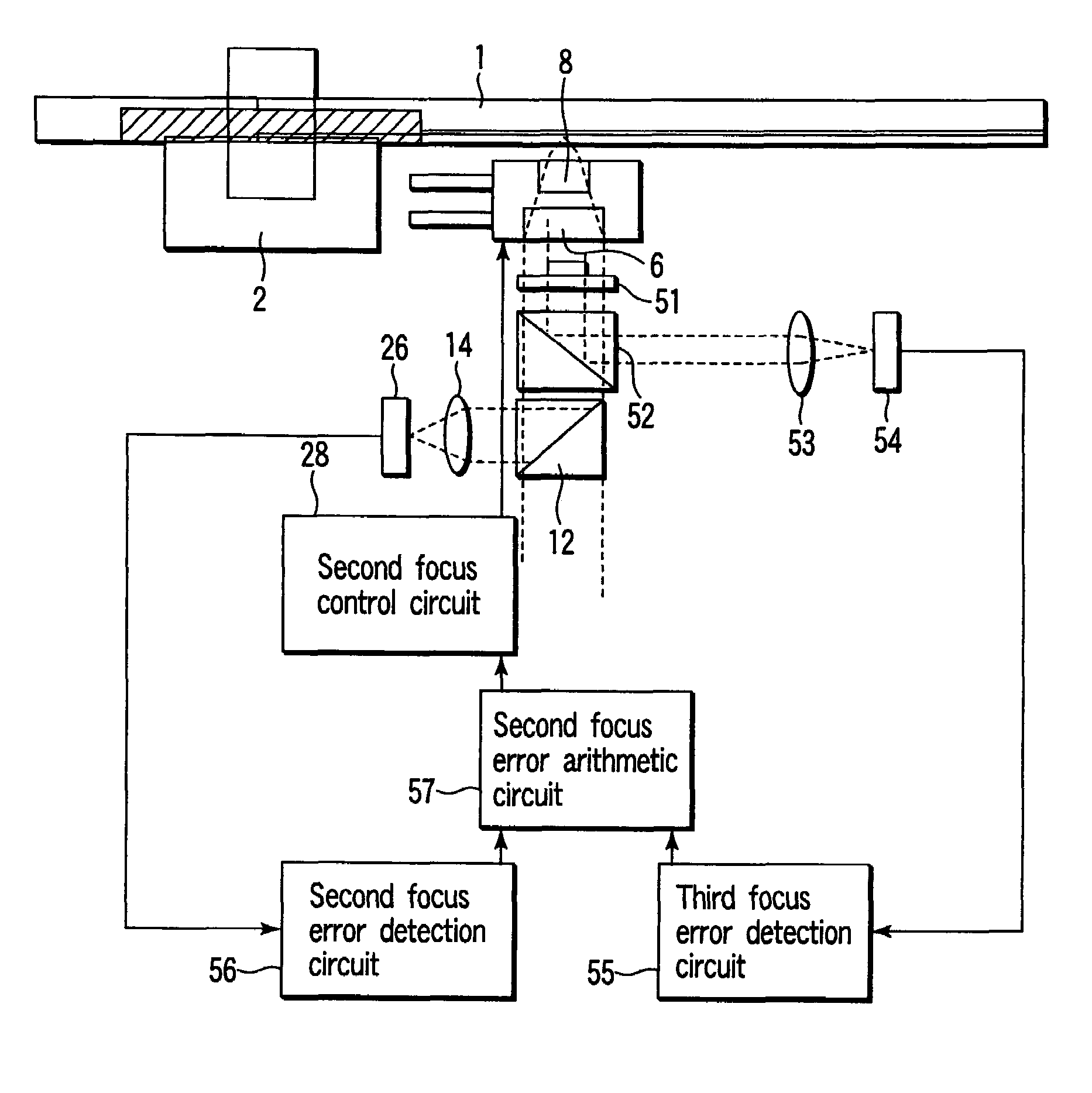Optical disk apparatus and optical disk processing method
a technology of optical disk and optical disk, applied in the field of optical disk apparatus, can solve the problems of easy change of floating amount, stricter specifications, collision of objective lens with optical disk, etc., and achieve the effect of stable focus control and focus lead-in operation
- Summary
- Abstract
- Description
- Claims
- Application Information
AI Technical Summary
Benefits of technology
Problems solved by technology
Method used
Image
Examples
first embodiment
[0038]Two objective lens actuators are provided, and focus lead-in control is performed by learning the surface run-out.
[0039]FIG. 1 is a perspective view showing the structure of an optical disk apparatus having a focus error detection circuit according to the present invention. FIG. 2 is an enlarged view of the structure around an objective lens actuator. This structure has two different optical systems, and an optical head has two objective lenses and actuators, so that information can be reproduced from or recorded on a predetermined optical disk using a low-NA optical system, and information can be reproduced from or recorded on another predetermined optical disk using a high-NA optical system.
[0040]An optical disk 1 having an information recording surface is attached to a spindle motor 2, and its rotation is controlled. An optical head for reproducing / recording information by forming an optical spot on the information recording surface of the optical disk 1 is supported to be ...
second embodiment
[0056]A focus error detection optical system generates and mixes two focus errors.
[0057]FIG. 8 is a block diagram showing the arrangement of an optical disk apparatus having a focus error detection circuit of the present invention. Since the arrangement of the low-NA first optical system and the like is the same as that of the first embodiment, FIG. 8 shows the arrangement of only the high-NA second optical system.
[0058]In this arrangement, a phase converter 51 having a function of shifting about ¼λ (wavelength) only the transfer phase around the optical axis center is inserted in the optical path of the high-NA optical system. Some light components of light that enter the second objective lens 8, especially, light components near the optical axis center are not focused by a first component lens 62 that forms the second objective lens, but are focused by only a second component lens 61, forming a spot on the information recording surface in the optical disk. FIG. 9 shows the structu...
PUM
| Property | Measurement | Unit |
|---|---|---|
| thickness | aaaaa | aaaaa |
| thickness | aaaaa | aaaaa |
| distance | aaaaa | aaaaa |
Abstract
Description
Claims
Application Information
 Login to View More
Login to View More - R&D
- Intellectual Property
- Life Sciences
- Materials
- Tech Scout
- Unparalleled Data Quality
- Higher Quality Content
- 60% Fewer Hallucinations
Browse by: Latest US Patents, China's latest patents, Technical Efficacy Thesaurus, Application Domain, Technology Topic, Popular Technical Reports.
© 2025 PatSnap. All rights reserved.Legal|Privacy policy|Modern Slavery Act Transparency Statement|Sitemap|About US| Contact US: help@patsnap.com



